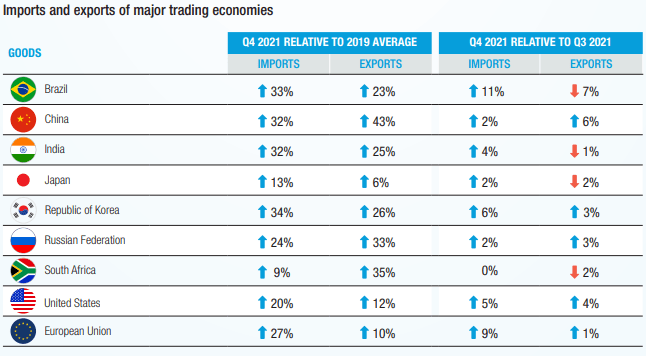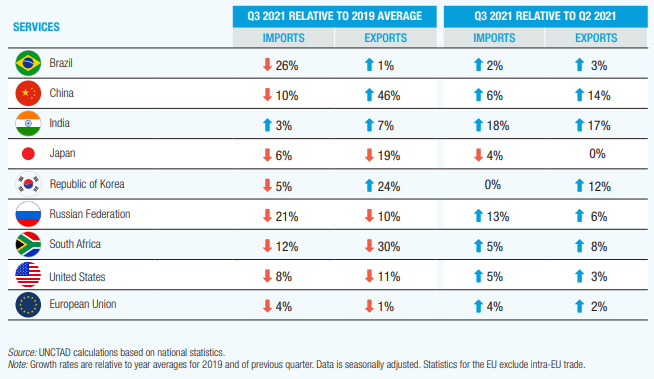International trade trends for some of the world’s leading trading economies illustrate export and import growth patterns over recent quarters, according to UNCTAD.
For HSBC bank, international trade performed well in 2021, with volumes exceeding pre-pandemic levels despite continued supply chain disruptions.


Looking ahead, trade growth could be further boosted by the lifting of movement restrictions that remain in place in some countries.
Also, according to HSBC, there are signs that supply chain bottlenecks will ease as the year progresses, though when and how remains uncertain.
The Regional Comprehensive Economic Partnership (RCEP) is expected to reinforce Asia‘s central role in world trade. Together with the bilateral trade agreements reached by some countries, it also shows that trade liberalization continues to advance in some parts of the world.
International Trade
In the fourth quarter of 2021, merchandise trade in all major economies was well above pre-pandemic levels in 2019, for both imports and exports.
The UNCTAD exposed that the negative quarter-on-quarter rates reveal that the positive export trends were reversed for some of the main economies during the fourth quarter of 2021.
However, export growth in this period remained strong for China, the United States and also the Republic of Korea.
By contrast, import trends continued to be positive.
Data on services are reported with a lag of one quarter. In the third quarter of 2021, services trade for most major economies was still substantially lower than pre-pandemic 2019 averages.
But, as the quarter-on-quarter rates show, the third quarter of 2021 marked a substantial recovery in services trade for all major economies, with the exception of Japan.
After China’s strong recovery, growth slowed in the second half of 2021.
As a result, we expect the Chinese government to take steps to ease monetary and fiscal policies, with the aim of boosting growth.
Meanwhile, India‘s economy will grow rapidly, but the UNCTAD expects growth to be slower in the UK and US.
![]()

